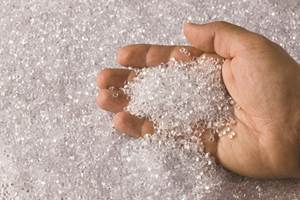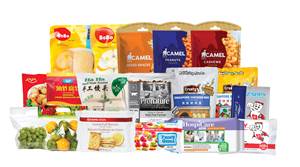Your Business Pricing Update - January 2009
2009 Resin Pricing Outlook: Still Looking for a Bottom
With demand for all commodity resins exceedingly weak, and feedstock prices fallen through the floor, there appears to be nothing to stop resin tabs from shrinking further in 2009.
With demand for all commodity resins exceedingly weak, and feedstock prices fallen through the floor, there appears to be nothing to stop resin tabs from shrinking further in 2009. That hasn’t stopped polyolefins producers from making an attempt to raise prices in the teeth of this “perfect storm.”
Putting it all in perspective, Bill Bowie, president of resin purchasing consultants Resin Technology, Inc. (RTI) in Fort Worth, Texas, says, “Barring some major global event, we may see a more stable resin pricing environment globally as economies start to rebuild themselves. Our advice to plastics processors during this time is to take a careful look at your business to find opportunities for change that will allow you to weather this downturn. This includes identifying opportunities to use lower-cost resins. I also think processors should broaden their opportunities by dealing with more suppliers.”
Bowie notes that there are some real questions about which resin suppliers will remain standing. By dealing with at least two to three suppliers, he says, you won’t be left in the lurch if one of your suppliers quits the market, through divesting a resin business or otherwise.
For the future, he advises, “Always look out for the key indicators, like prices and availability of chemical feedstocks to get a better feel for where things are heading. I think an early glimmer of an upturn is very likely to come from China, when we see their GDP rising and factories humming again.”
PE: TIME FOR A HIKE?
Overall, polyethylene prices are projected to be 25% lower in 2009 vs. 2008. Those prices, which climbed 18¢/lb in 2008 (and a total of 42¢ since 2007), had declined 33¢ through November. Another drop of as much as 10¢ was possible by the end of December. Declaring that resin tabs had “bottomed out,” PE suppliers dared to issue a price increase of 7¢/lb for Jan. 1. That view was not supported by the direction of the London Metal Exchange (LME) short-term North American futures contract in blown-film butene LLDPE. It hit 19.7¢/lb for January, a steep drop from December’s 58.7¢.
Contributing factors: Industry sources see potential for “relative stability” in prices during most of the first quarter, primarily because feedstock prices are projected to be stable as well. “Pay attention to what spot ethylene and precursor ethane prices are doing,” advises Mike Burns, RTI’s global business director for PE. Ethylene contract prices dropped to 38¢/lb in November, 25¢ lower than in September. December contracts were expected to drop another 8¢ to 10¢. Meanwhile, spot prices were at a low of 15¢ to 16¢/lb.
The consensus of industry analysts is that the new PE price initiative is not likely to take hold until later in the first quarter. “You can expect to see ethylene spot prices come up to about 20¢/lb or more, at which point ethylene contract prices will move up some. PE resin suppliers may then be able to implement 3¢ to 5¢ of their 7¢/lb increase,” says RTI’s Burns.
Meanwhile, following a 4% to 6% drop in PE demand in 2007, PE demand in 2008 was down by the same amount for high-demand products like film resins, and as much as 15% lower for other types, such as injection molding grades for containers. While no one is willing to cite a number for how demand will fare this year, there is an expectation of further declines. Resin suppliers are likely to implement more production cutbacks.
Sums up RTI’s Burns, “In 2008, 10 billion lb, or 25%, of North American PE production was exported. In 2009, the PE export market may not exist if there is no change in the global economy. Domestic suppliers would need to reduce production by 10 billion lb before cutbacks would impact resin pricing.”
PP PRICES PLUNGE
Polypropylene prices were expected to end 2008 68¢ to 70¢/lb below their high point for the year. From their peak in July-August, PP tabs declined by 57¢ through November, which left prices 32¢ below their level at the start of the year. At least 10¢ more was expected to come off in December. Claiming prices had hit bottom, suppliers announced hikes of 5¢ to 6¢/lb for Jan.1. However, the LME’s North American short-term futures contract for January in g-p injection-grade homopolymer plunged to 29.8¢/lb from December’s 37¢.
Contributing factors: Domestic PP demand was down 7% by the end of the third quarter and was expected to be down 10% to 12% by the end of 2008. Scott Newell, RTI’s director of client services for PP expects to see more shutdowns of PP capacity, some permanent and some temporary.
Propylene monomer is in oversupply due to slack demand. By the end of 2008, monomer price was down 65¢/lb from the peak in mid-summer. December contract prices were expected to come down at least another 10¢ to about 20¢/lb. “The last time we saw propylene monomer and PP resin prices this low was in the summer of 2003,” notes Newell. He expected that monomer and PP resin prices would hit bottom in December and would stabilize this month.
As for the announced PP price hike, Newell says, “We expect to see at least a portion of that increase take hold in the first quarter. The big question is: where is the real demand? This is a tough call without knowing where our economy and global economics in general will go. What will happen to crude oil prices? Will they go down to $25/barrel or up to $65/barrel?”
PVC IN ’09: FLAT TO DOWN
PVC prices were expected to fall 6¢ to 7¢/lb in December. Early last month, Formosa announced a 5¢/lb increase for Jan. 1, but at mid-month the move wasn’t supported by other producers.
Contributing factors: Demand in December was extremely weak. Overall PVC demand for 2008 was expected to end 9% to 9.5% below the year before. Optimistic resin producers say PVC demand in 2009 will be flat or down at most 1% to 2%. Their “worst-case” scenario is a 5% to 6% drop in demand this year because of the downturn in construction. Housing starts are expected to stay weak—below 600,000 units, vs. over 1 million in a normal economy. And any recovery in the housing market will have to work through a large inventory of unsold homes before new construction will resume.
Resin suppliers’ operating rates are believed to have been below 60% for the fourth quarter. In mid October, Shintech started up 650 million lb of its new 1.3-billion-lb plant in Iberville, La. At the same time, Shintech took an early scheduled maintenance shutdown at its 1.1-billion-lb plant in Addis, La., temporarily avoiding further excess resin capacity. Some older PVC plants are expected to close this year.
PS KEEPS DROPPING
Polystyrene resin producers and analysts expected prices to fall 12.5¢/lb in December after a plunge of 20¢ in November. PS prices are expected to be flat or lower in 2009, especially in the seasonally weak first and second quarters.
Contributing factors: The price of benzene feedstock continued to fall in December. Contract benzene was $1.07/gal, down from $1.60 in November. Spot prices dipped as low as 80¢, which is below cost. Benzene is expected to stay long throughout 2009, as new environmental regulations gradually reduce the amount of aromatics that can be put into gasoline, increasing the amount of toluene that will go into benzene instead.
Demand for PS was severely weak in November and December, so total demand for 2008 could end up as much as 9% to 10% below 2007. Resin operating rates were believed to be in the 70% to 74% range last month.
PET PRICES PLUMMET
PET prices plunged at least 15¢/lb between September and November, following a drop of 5¢ in August, and were expected to slip a bit lower last month. PET prices are expected to be flat this month, though a price increase could emerge late in this first quarter. Prices typically go up in the second quarter, when demand normally surges.
Contributing factors: PET tabs have followed feedstock prices downward nearly penny for penny. Paraxylene and ethylene glycol were both down 10¢ to 12¢/lb through November and were expected to fall a bit lower in December—erasing any profit margin for PET suppliers.
According to Michael Dewsbury, RTI’s global business director for PET, demand for PET in 2008 was down from the previous year, but he is “relatively optimistic” that 2009 will be flat or better. “The key question is: when will the economy improve? In the past, we thought that the soda and water bottle markets were recession-proof. This does not seem to be the case now, as consumers are cutting back.”
Supply/demand balance signals a 10% improvement in resin capacity utilization rates for 2009. Permanent shutdowns of PET resin capacity by Invista and Wellman already equal the 800 to 900 million lb of new capacity that will be brought on stream by Indorama’s AlphaPet subsidiary in Decatur, Ala., at the end of this year. This new capacity, added to the 500 million lb at StarPet’s existing site in North Carolina, would make Indorama the leading PET supplier in North America.
Acrylic Resin Made from Renewable Raw Materials
Acrylic has joined the growing ranks of plastics being made from renewable sources. New Altuglas Rnew from Altuglas International in France (U.S. office in Philadelphia), is a PMMA grade containing 20% of carbon derived directly from biomass. It has properties comparable to conventional PMMA grades produced entirely from “fossil” carbon.
(800) 523-1532 • www.altuglas.com
| |||||||||||||||||||||||||||||||||||||||||||||||||||||||||||||||||||||||||||||||||||||||||||||||||||||||||||||||||||||||||||||||||||||||||||||||||||||||||||||||||||||||||||||||||||||||||||||||||||||||||||||||||||||||||||||||||||||||||||||||||||||||||||||||||||||||||||||||||||||||||||||||||||||||||||||||||||||||||||||||||||||||||||||||||||||||||||||||||||||||||||||||||||||||||||||||||||||||||||||||||||||||||||||||||||||||||||||||||||||||||||||||||||||||||||||||||||||||||||||||||||||||||||||||||||||||||||||||||||||||||||||||||||||||||||||||||||||||||||||||||||||||||||||||||||||||||||||||||||||||||||||||||||||||||||||||||||||||||||||||||||||||||||||||||||||||||||||||||||||||||||||||||||||||||||||||||||||||||||||||||||||||||||||||||||||||||||||||||||||||||||||||||||||||||||||||||||||||||||||||||||||||||||||||||||||||||||||||||||||||||||||||||||||||||||||||||||||||||||||||||||||||||||||||||||||||||||||||||||||||||||||||||||||
KEY: Colored areas indicate pricing activity. An arrow () indicates direction of price change. aTruckload, unless otherwise specified. bUnfilled, natural color, unless otherwise specified. cBased on typical or average density. dNot applicable. eNovolac and anhydride grades for coils, bushings, transformers. fNovolac and anhydride grades for resisitors, capacitors, diodes. gIn quantities of 20,000 lb. h19,800-lb load. jLME 30-day futures contract for lots of 54,564 lb.. | |||||||||||||||||||||||||||||||||||||||||||||||||||||||||||||||||||||||||||||||||||||||||||||||||||||||||||||||||||||||||||||||||||||||||||||||||||||||||||||||||||||||||||||||||||||||||||||||||||||||||||||||||||||||||||||||||||||||||||||||||||||||||||||||||||||||||||||||||||||||||||||||||||||||||||||||||||||||||||||||||||||||||||||||||||||||||||||||||||||||||||||||||||||||||||||||||||||||||||||||||||||||||||||||||||||||||||||||||||||||||||||||||||||||||||||||||||||||||||||||||||||||||||||||||||||||||||||||||||||||||||||||||||||||||||||||||||||||||||||||||||||||||||||||||||||||||||||||||||||||||||||||||||||||||||||||||||||||||||||||||||||||||||||||||||||||||||||||||||||||||||||||||||||||||||||||||||||||||||||||||||||||||||||||||||||||||||||||||||||||||||||||||||||||||||||||||||||||||||||||||||||||||||||||||||||||||||||||||||||||||||||||||||||||||||||||||||||||||||||||||||||||||||||||||||||||||||||||||||||||||||||||||||||
Related Content
Polyethylene Fundamentals – Part 4: Failed HDPE Case Study
Injection molders of small fuel tanks learned the hard way that a very small difference in density — 0.6% — could make a large difference in PE stress-crack resistance.
Read MoreFundamentals of Polyethylene – Part 3: Field Failures
Polyethylene parts can fail when an inappropriate density is selected. Let’s look at some examples and examine what happened and why.
Read MoreFlexible-Film Processor Optimizes All-PE Food Packaging
Tobe Packaging’s breakthrough was to create its Ecolefin PE multilayer film that could be applied with a specialized barrier coating.
Read MoreFundamentals of Polyethylene – Part 6: PE Performance
Don’t assume you know everything there is to know about PE because it’s been around so long. Here is yet another example of how the performance of PE is influenced by molecular weight and density.
Read MoreRead Next
See Recyclers Close the Loop on Trade Show Production Scrap at NPE2024
A collaboration between show organizer PLASTICS, recycler CPR and size reduction experts WEIMA and Conair recovered and recycled all production scrap at NPE2024.
Read MorePeople 4.0 – How to Get Buy-In from Your Staff for Industry 4.0 Systems
Implementing a production monitoring system as the foundation of a ‘smart factory’ is about integrating people with new technology as much as it is about integrating machines and computers. Here are tips from a company that has gone through the process.
Read MoreLead the Conversation, Change the Conversation
Coverage of single-use plastics can be both misleading and demoralizing. Here are 10 tips for changing the perception of the plastics industry at your company and in your community.
Read More














